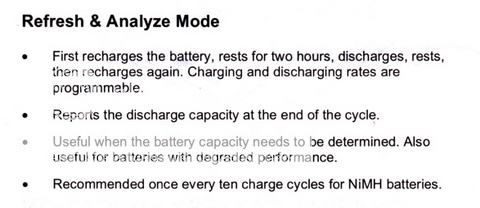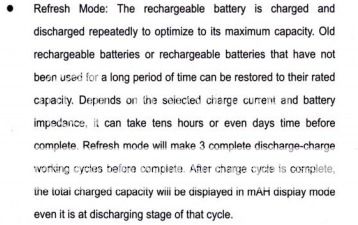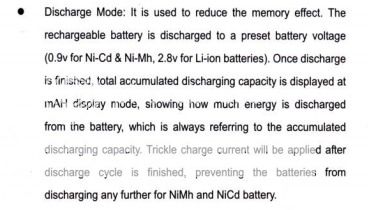Have you tried doing a break in?
Normally if the cell is being discharged to 0.9volts it wont harm it but if the camera is shutting off due to low battery and then attempt to discharge it with a charger the cycle life can be reduced. Also it may be possible that the cells may be older than 5 years. They may have been on the shelf for 3 or more years initially. I dont have any issues with my Duracell Ion Cores or my AAA Eneloop Pros. I noticed that when they get discharged they wont recover past 1.1volts. Regular Eneloops will recover to 1.2 volts.
Thank you again for that input - so although discharging near empty battery may seem "foolish" - can it really be the cause of 95% loss in life?
as posted before:
when the Maha/PowerEX C9000 displays HIGH the only operation available is discharge -and that shows DONE momentarily -they are now all HIGH (internal resistance) in the Maha/PowerEX MH-C9000 and won't even discharge in that charger.
in other words these 6 Ion-Core AA are kaput, dead, gone to see their maker, pushing up the daisies - as far as the Maha/PowerEX C9000 is concerned, I canNOT do anything in that charger...
The Opus BT-C3100 v2.1 does not seem to have a break-in cycle.
Just a thought - my seemingly foolish routine, is kind of like a "Refresh" cycle for every use of the battery -
Maha/PowerEX C9000 manual -

Opus BT-C3100 v2.1 manual -

Thanks.
I might....and state might be having issues with a Duraloop pro in my SC5W. Twice it was expectantly dead with drained battery. Only the very initial stages for investigation so nothing is ruled out.
Thanks for that input - just to confirm - these are the Duracell Ion-Core AA?
please let us know of any developments in your investigation?
Thank you,
Last edited:



 - one fully working with 2 slots that can charge at 1500mA, and another where slot #1 does not work properly - so only one slot that can charge above 1000mA)
- one fully working with 2 slots that can charge at 1500mA, and another where slot #1 does not work properly - so only one slot that can charge above 1000mA)